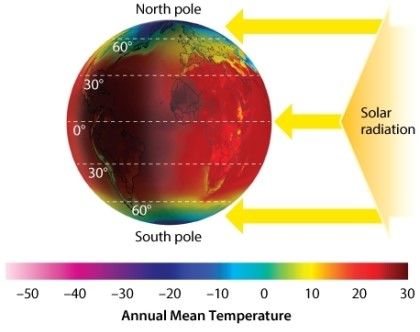Multiple Choice
Consider the figure below (Figure 48.1) .  If the Earth spun on an axis that was perfectly perpendicular to the equator, how might this affect latitudinal differences in incoming solar radiation?
If the Earth spun on an axis that was perfectly perpendicular to the equator, how might this affect latitudinal differences in incoming solar radiation?
A) There would be no latitudinal difference because the axis of the Earth would be perpendicular to the sun.
B) There would be no latitudinal differences because all points on the Earth would be equidistant from the sun.
C) There would still be latitudinal differences because latitude is not determined by the Earth's position on its axis
D) There would still be latitudinal differences because incoming solar radiation would be spread across a greater area at the poles than at the equator.
Correct Answer:

Verified
Correct Answer:
Verified
Q8: This biome is the coldest, with the
Q9: Most of Earth's primary production comes from
Q10: What physical properties of the Earth BEST
Q11: At the equator, warm air rises and
Q12: In which of the following regions would
Q14: If Earth had no oceans, would temperatures
Q15: High biomass of primary producers in surface
Q16: Certain regions on the deep sea floor
Q17: The latitudinal diversity gradient refers to what
Q18: Why are microorganisms like fungi, bacteria, and